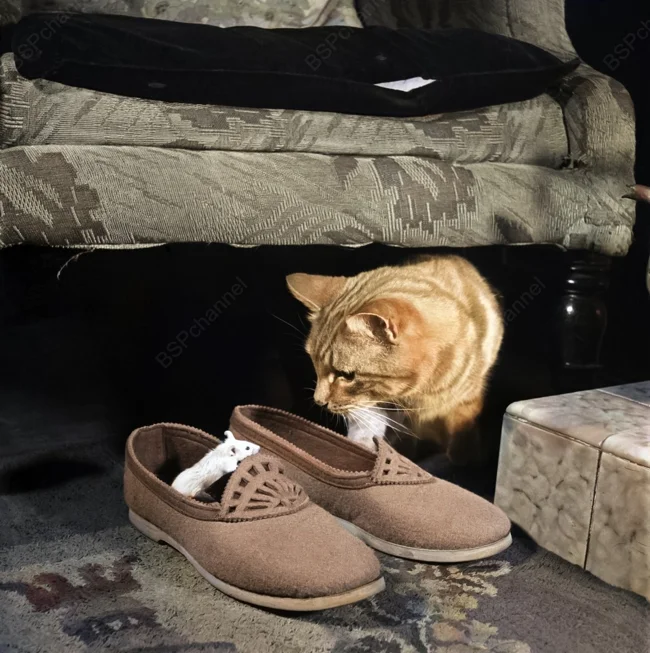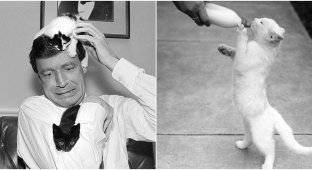A collection of funny and amusing photos of cats that will lift your spirits (21 photos)
I present to you a selection of touching, playful, and truly heartwarming photographs of cats taken throughout the 20th century. And yes, all the photographs have been carefully colorized to restore the vibrancy and warmth of a bygone era. 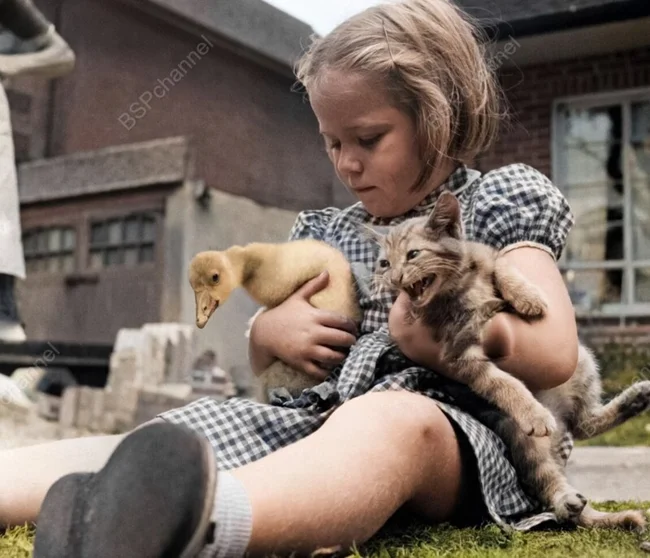
A girl from the village of Verkoly holds a cat in her arms. Arkhangelsk Region, 1977. 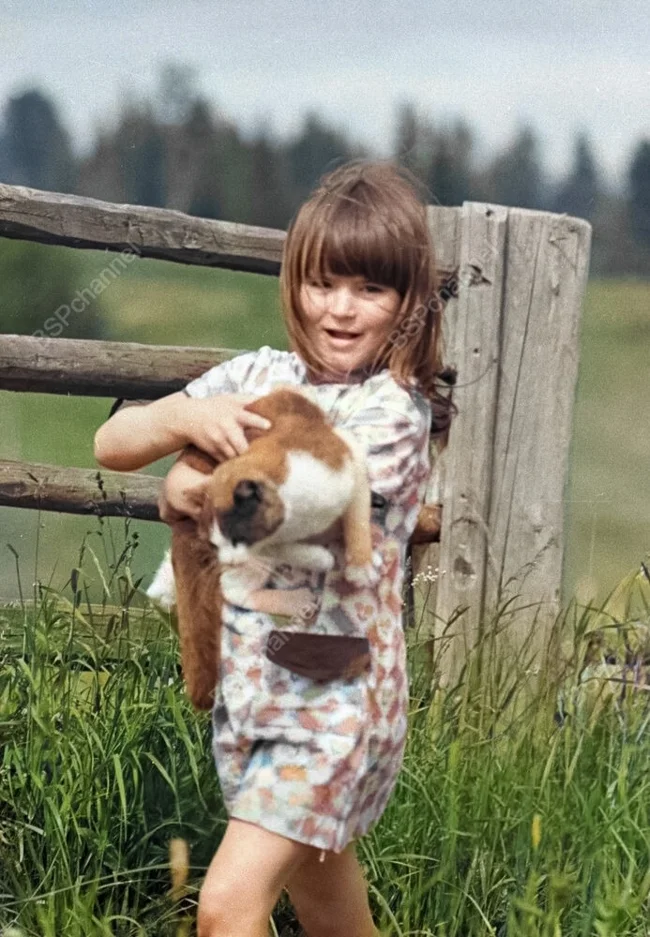
Photographer: Rudolf Kucherov
A cat named Manni from Deucham and her adopted piglets, 1941. 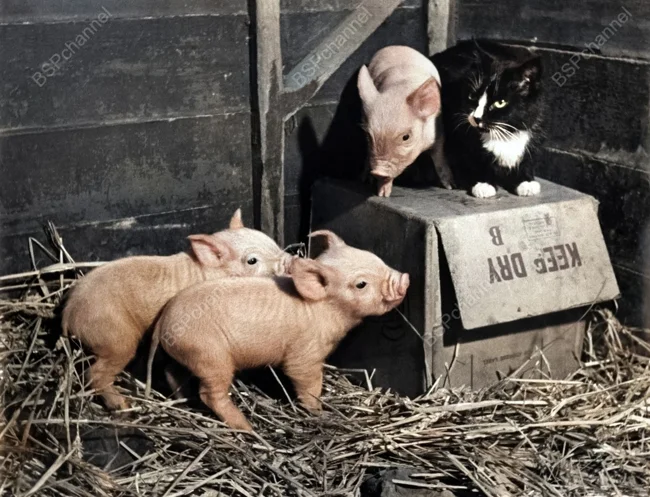
Casting black cats for the lead roles in Roger Corman's film in Los Angeles, California, 1961. 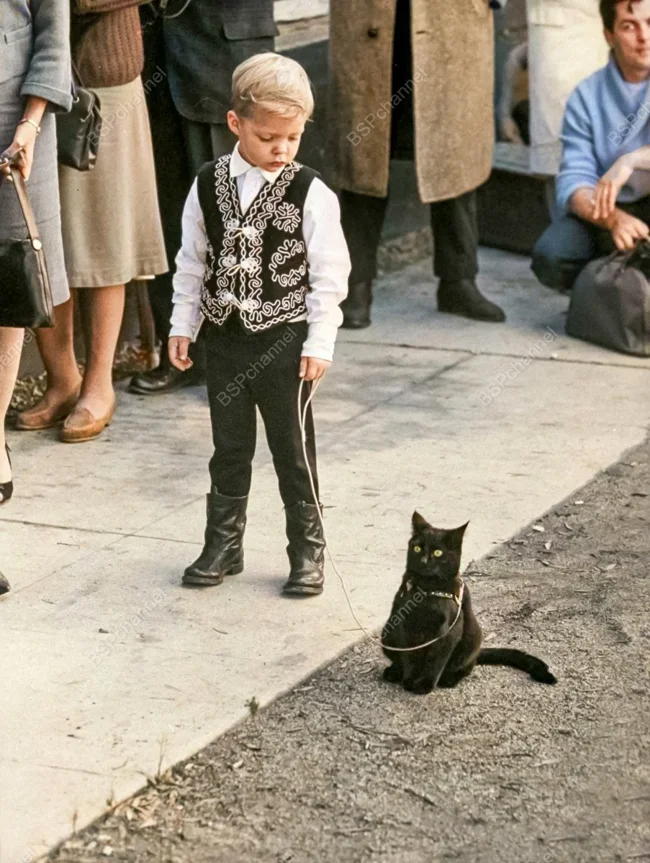
In the world of four-legged actors, dogs traditionally lead the way: Lassie, Benji, Toto from "The Wizard of Oz," and more recently, Marley and Skip—all became true stars. Cats, however, have a much more difficult path to Hollywood stardom. This is likely due not to talent, but to a lack of worthy roles.
However, cats did have a chance, albeit a grim one, to make a name for themselves. This is the case in Edgar Allan Poe's iconic short story "The Black Cat" (1843), in which a cat becomes a key witness to a crime: its eerie meowing from behind a wall solves the murder. This story formed the basis for an episode of the 1962 horror anthology "Terror Stories," although the screenwriters made significant changes, incorporating motifs from another Poe work.
Exactly 152 cats showed up for the casting call for the title role. According to the organizers, all of them were "much calmer than their agitated owners." Some candidates were eliminated due to white paws or noses; the role required a flawless black coat. But even those who passed the casting had to accept disappointment: the lead role had already been given to a "well-known professional cat." However, seven lucky cats did get the job; they were hired as stunt doubles, chosen for their particularly sinister gaze.
From the photo book "Irish Travelers." Year unknown. 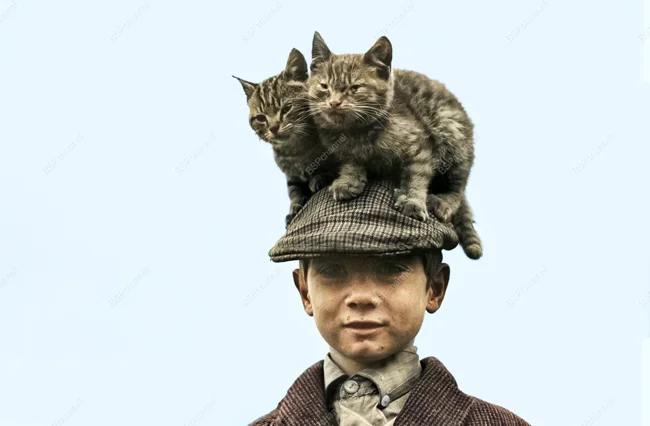
Photographer: Alain McWeeney
A kitten and lamb at Chessington Zoo. England, 1948. 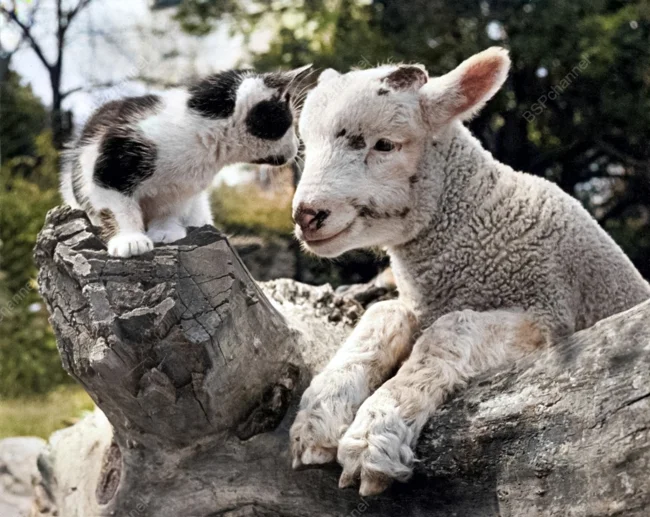
A cat named "Nipper" eats corn. Los Angeles, California, 1954. 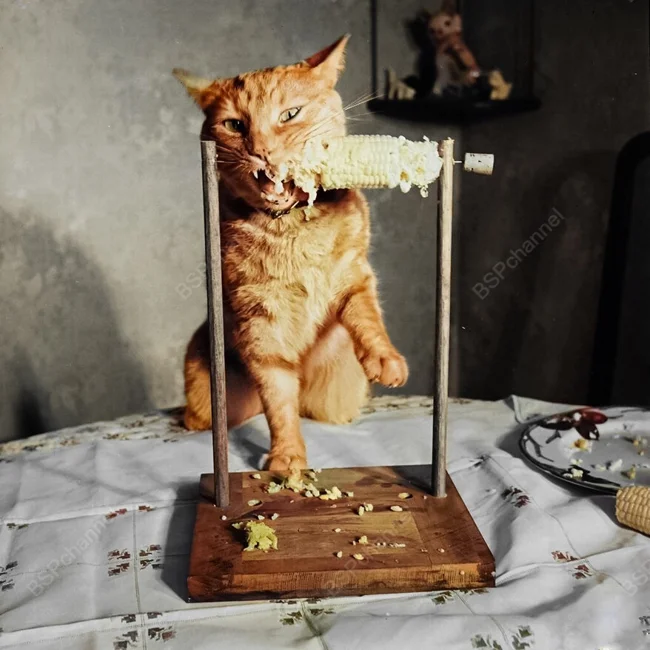
In the 1950s, an unusual gourmet appeared in Hollywood: a two-year-old cat named Nipper, owned by Dorothy Brinn. This refined, furry aesthete adored corn so much that his caring owner even built him a special skewer so he could enjoy the delicacy in complete comfort.
From an early age, Nipper developed a passion for corn on the cob—he ate two a day, always with butter. Apparently, Hollywood life had accustomed him to refined tastes: plain corn without a creamy accent no longer counted!
"The introduction never happened." Chelyabinsk Region, 1970s. 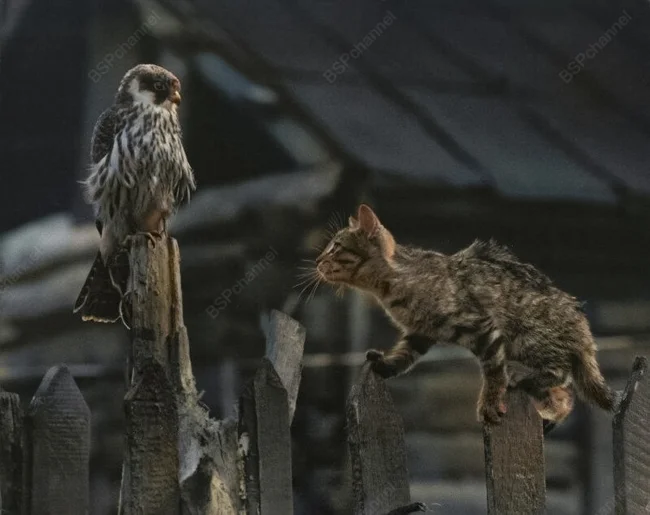
Photographer: Sergey Vasiliev
Pippin, Maisie, and Poppet – cats at the British Museum, 1980s. 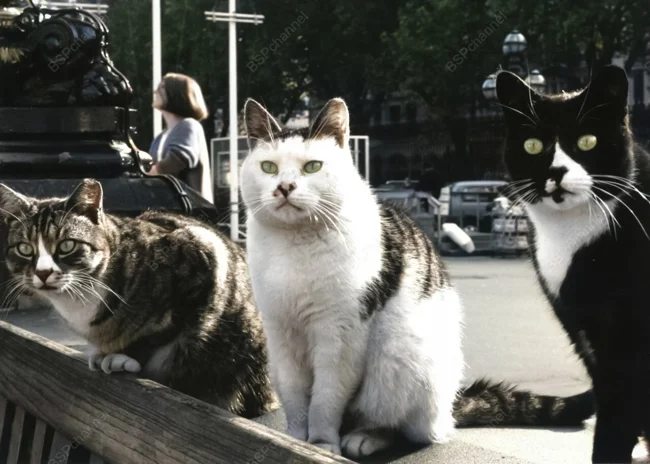
For centuries, the British Museum in London has housed not only artifacts from civilizations, but also… cats. Yes, cats—furry, independent, and unofficial employees of the institution, whose mission was as important as it was ancient: the fight against rats and mice that threatened the collections.
The history of museum cats dates back to the 19th century. As early as the 1830s, references to "rat-catching cats" appeared in the museum's archives, and by the 1850s, their presence had become official practice. These animals received not only food and shelter, but also a weekly stipend of food and sometimes even a small sum of money from the institution's budget. For example, in 1874, a museum cat named Mike was hired for a salary of one shilling a week for "diligently exterminating rodents."
Seeing Eye Cat Baby and his owner, Carolyn Swenson, on a walk, 1947. 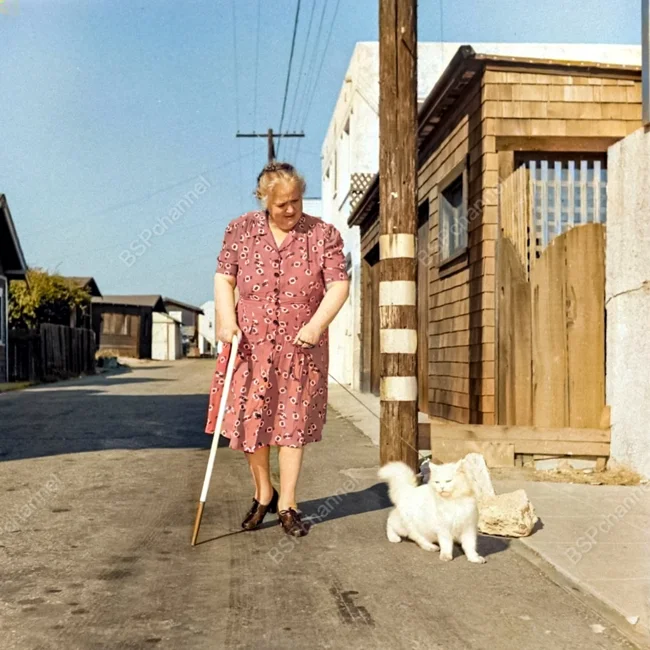
In the world of service animals, we've long been accustomed to seeing trained dogs—reliable, loyal, and patient—at the side of visually impaired people. However, in the late 1940s, the public was surprised by an unexpected duo: blind Carolyn Swanson and her Persian cat, Baby, who acted as her guide dog.
The reasons for this unusual choice remain a mystery: perhaps Carolyn was allergic to dogs, afraid of them, or simply couldn't imagine life without her beloved cat. Whatever the case, their bond was so strong that LIFE magazine sent a photographer in 1947 to capture this unusual couple.
Carolyn kept Baby on a short leash—a precaution to avoid a sudden jerk if the cat spotted a squirrel or other temptation. Yet Baby displayed remarkable concentration: he confidently led his owner through busy streets, helped her over thresholds, and provided her not only with physical support but also with an emotional connection that went far beyond species.
Local residents were touched by the cat's devotion. The city newspaper proudly announced that Baby had received a medal for "faithful service to his blind owner." He posed in photographs with this shining badge of honor—a true hero in a fluffy fur coat. Although, apparently, for Baby himself, the most important reward was still a bowl of his favorite food.
The story of a Persian cat becoming a guide for a visually impaired person sounds unusual—especially in an era when dogs reigned supreme in helping people with disabilities. But it was Baby who reminded the world that loyalty, trust, and the ability to serve are independent of both species and stereotypes. He became a quiet but brilliant innovator—proof that any pet, whether dog or cat, can become a true friend and supporter.
Score. Paris, 1982. 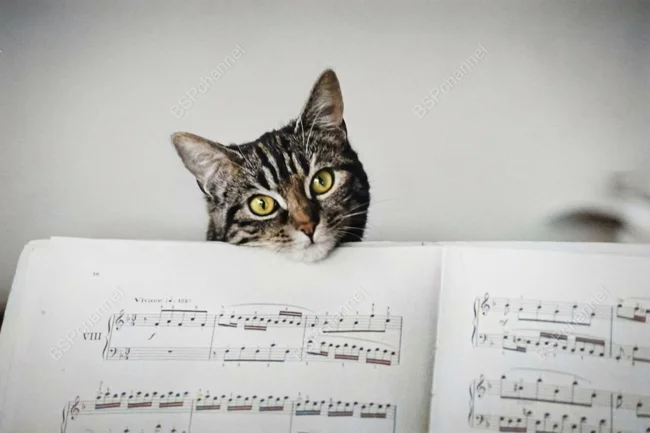
Photographer: Eduard Buba
A man shows off a cat. Sweden, 1941. 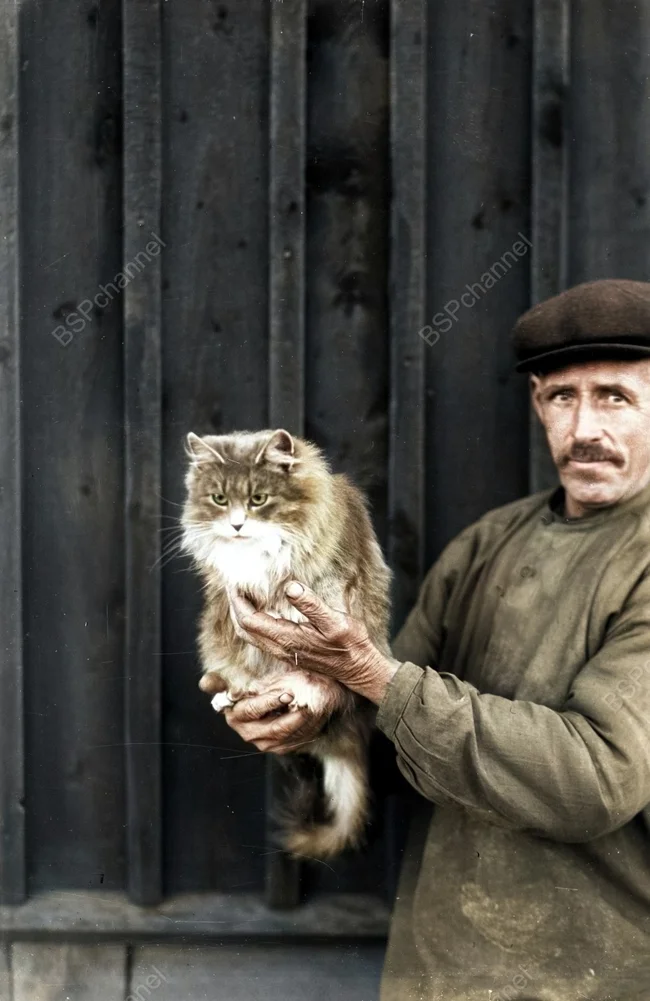
Donald the goose and Sandy the kitten in a little girl's arms, 1952. 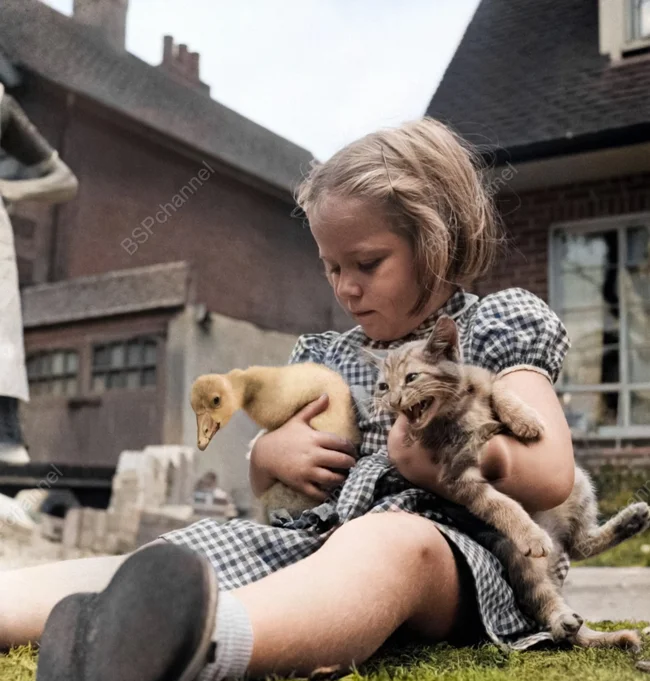
A woman plays the piano for cats of different breeds, 1954. 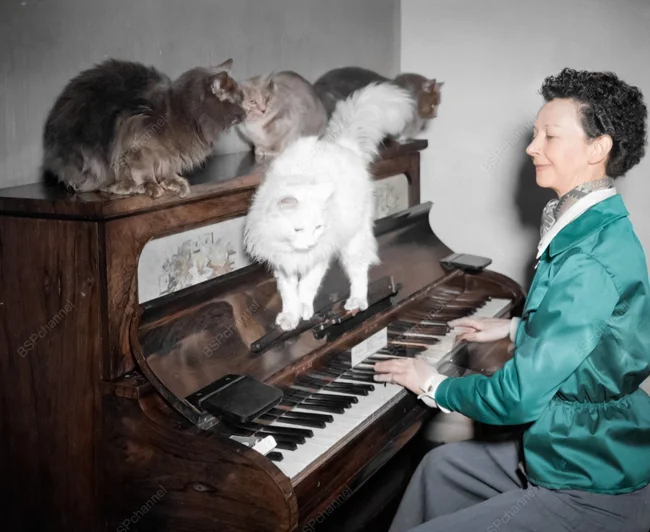
Many owners want to share the joy of listening to music with their pets – but, unfortunately, cats often remain completely indifferent to it, and sometimes even show irritation. Why is this? The answer lies in the peculiarities of "cat sound language."
Even in the last century, veterinarians noticed that certain musical notes trigger distinct behavioral reactions in cats, including excitement. High-pitched tones are particularly alarming: they resemble the cries of kittens in distress or the sounds of pain, which trigger the alarm instinct in adult cats. If your favorite tune contains such frequencies, don't be surprised if your pet leaves the room or becomes nervous. They're not criticizing your musical taste; they're simply reacting to a danger signal.
At the same time, certain sounds can evoke positive emotions in cats: purring, a relaxed posture, flattened ears, or even gentle rubbing against the sound source. However, such reactions are purely instinctive; cats perceive music not as art, but as a set of meaningful acoustic signals. Therefore, calling them "music lovers" would be an exaggeration.
But science has gone further. A group of researchers developed special "cat music" based on the frequencies and rhythms characteristic of feline communication, such as purring, purring, or the call of a mother and kitten. These compositions arouse the cats' keen interest: they approach the speaker, rub against it, and purr. The experiment was so successful that the authors even launched a commercial release of these tracks.
Furthermore, Portuguese scientists have discovered that certain classical pieces (particularly calm pieces) can reduce stress levels in cats. There is speculation that such audio recordings could one day be used in veterinary practice as part of therapy for anxious or sick animals.
Man with a Kitten, 1950s 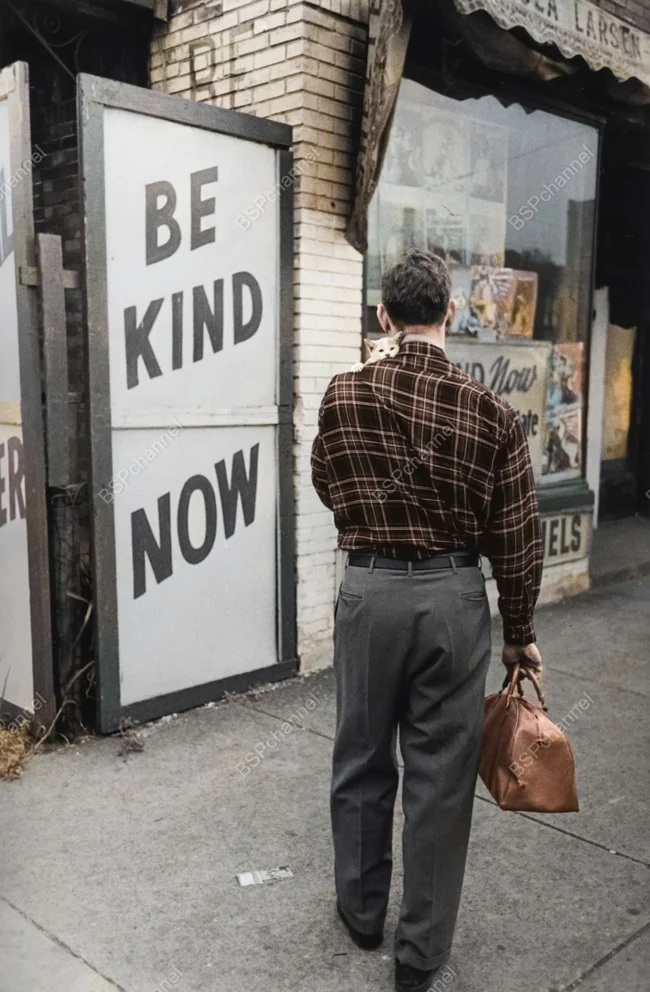
Photographer: Art Shay
Girl with a Cat. Moscow Region, 1981. 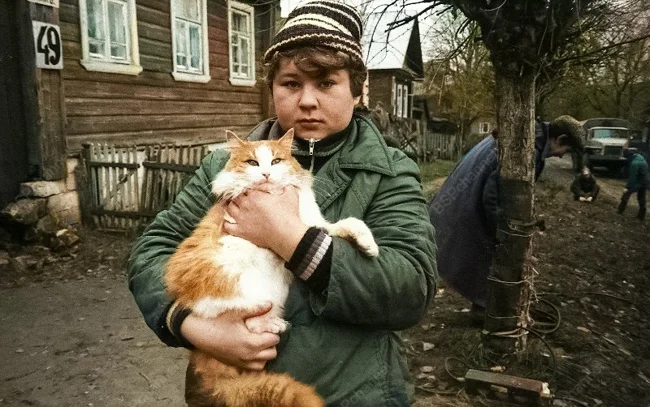
Photographer: Igor Gnevashev
Boy with a Cat. New York, 1954. 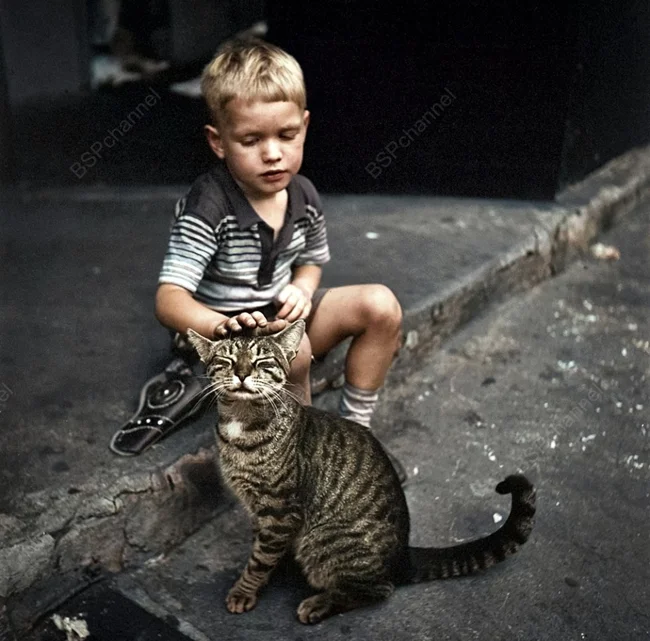
Photographer: Vivian Maier
Actress Anouk Aimée and the cat Tulip in the film "In the Prime of Years," 1947. 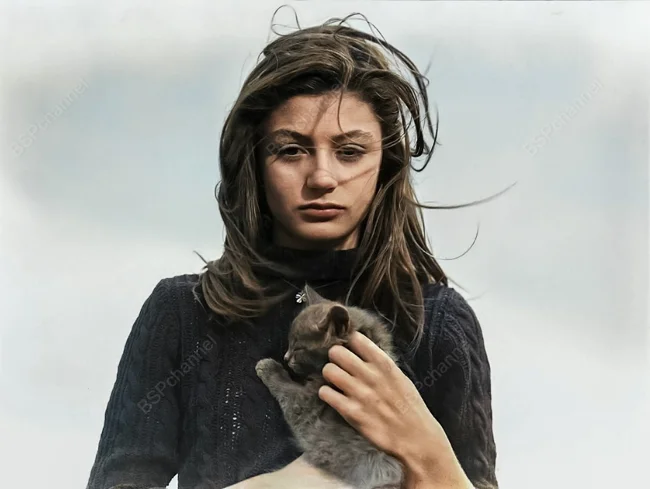
Photographer: Emil Savitri
A striped crew member. Large freezer fishing trawler "Alaska," 1965. 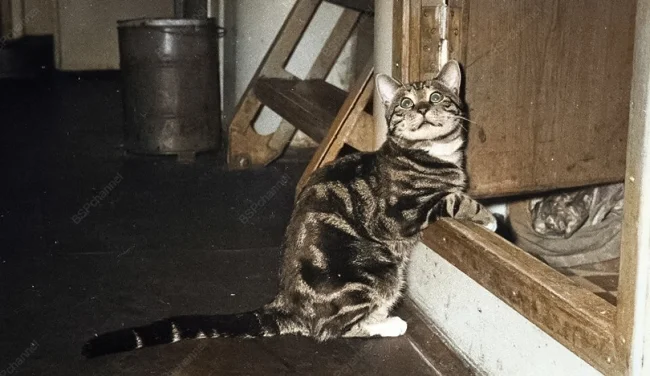
Photographer: Yuri Sadovnikov
For centuries, ship cats were an integral part of maritime life. Far from being just cute companions, they served a vital function: protecting ships from rats and mice, which could destroy food supplies, damage rigging, and even spread disease. But their role wasn't limited to practicality: sailors believed cats brought good luck, predicted storms, and protected the crew from harm.
Ship cats were especially popular during the Age of Sail, when long voyages made rodent control a matter of survival. They were often brought on board as kittens, so the animal could get used to the rocking motion, the sounds of the ship, and life in the close-knit community of sailors. Some cats became true legends: their names were recorded in ship logs, and special honors were awarded for their exploits (or simply their good fortune).
Barbara Bayena holds a glass of milk for her kitten, who is trying to figure out how to use a straw, 1949. 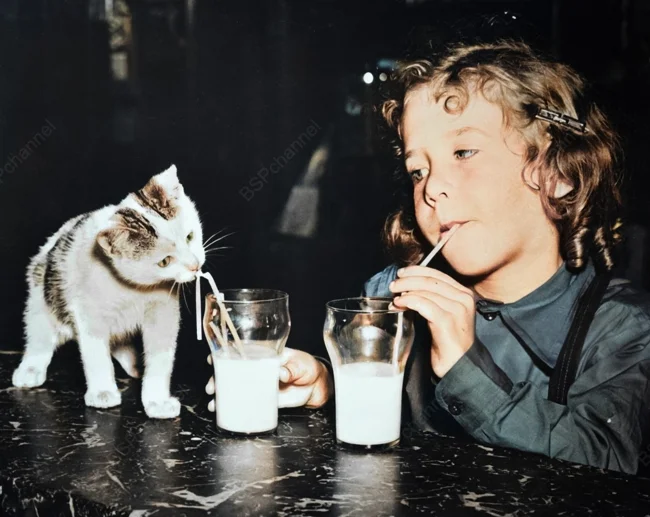
Ginger Cat plays with a mouse named "Snow White" at home, 1949. 